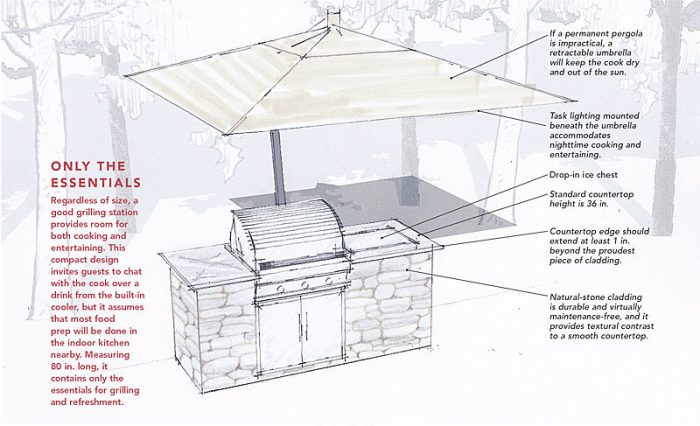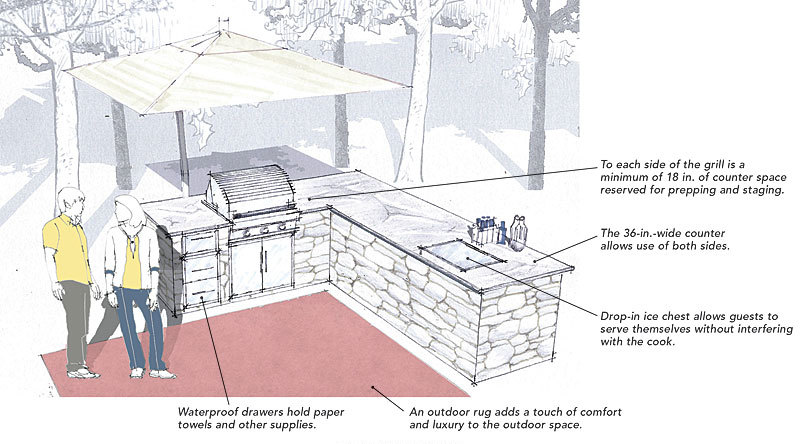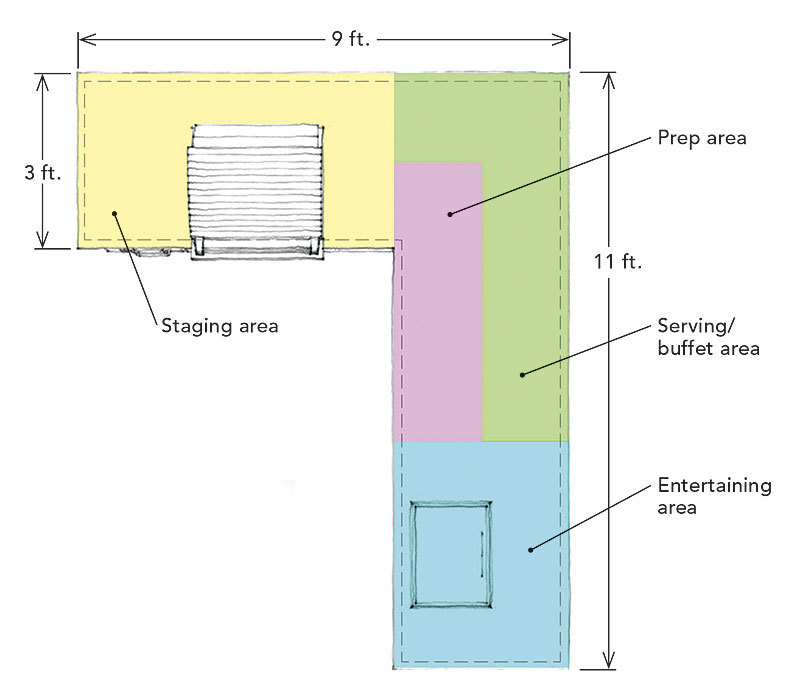Outdoor Grilling Stations
Outdoor spaces such as decks and patios are much more attractive gathering places when they include a grilling area.

The most successful outdoor living spaces incorporate a cooking area centered on a grilling station. With the means to cook meals or serve guests close at hand, your outdoor space—whether a patio, deck, or terrace—becomes a gathering spot your family and your guests won’t want to leave.
Thinking about your needs will help you determine whether you want a compact grilling station, or one with multiple features. Will you be entertaining large parties, or simply preparing dinners for your family? Space constraints and location are also important. Proximity to your indoor kitchen will determine which appliances, accessories, and workspaces you’ll need in your grilling station to prepare and serve a meal. You can get away without a side burner, a refrigerator, or an ice chest in your grilling station if your indoor kitchen is nearby. When well-designed, even a small grilling station can include many of the basics you need to prepare food, cook it, serve it, and clean up afterward.
The location of your grilling station, along with the features and appliances you choose, will determine its size and shape. In determining size, consider the ratio of appliances to finished surfaces: To avoid having your station look cramped and overcrowded, you should have twice the amount of visual countertop or stone cladding as you have stainless appliance surfaces. When choosing appliances, be sure to select only what you’re sure you’ll actually use.
The most significant difference between designing cooking spaces indoors and designing cooking spaces outdoors is exposure to the elements, so keep maintenance and durability in mind. The structure of the grilling station itself can be made of concrete block, metal studs, and sometimes pressure-treated wood. Consult the manufacturer of your appliances for any restriction on clearances and the use of combustible materials. Durable cladding materials include natural stone, brick, or stucco.
Good countertop options include concrete, natural stone, or tile, but porous stone and tile should be avoided in areas subject to freeze-thaw cycles. Concrete is resistant to heat, scratches, and cracks, but it requires periodic resealing. Granite is far less porous, won’t fade in sunlight, and can be honed to a matte finish. Light to midrange colors are best, as darker stones absorb heat and can be hot to the touch.
Only the Essentials
Regardless of size, a good grilling station provides room for both cooking and entertaining. This compact design invites guests to chat with the cook over a drink from the built-in cooler, but it assumes that most food prep will be done in the indoor kitchen nearby. Measuring 80 in. long, it contains only the essentials for grilling and refreshment.
Expansion Adds Convenience
This larger, L-shaped design separates the entertaining area from the grilling area by adding counter space for preparation and serving. In addition to undergrill storage, it includes waterproof drawers beside the grill to keep paper towels and serving utensils close at hand. At least 18 in. of counter space on each side of the grill allows for prepping and staging while cooking. The built-in ice chest is located so that accessing it will not interfere with the cook. The 36-in.-wide counter allows use of both sides—one for prep and the other as a serving/buffet area.








